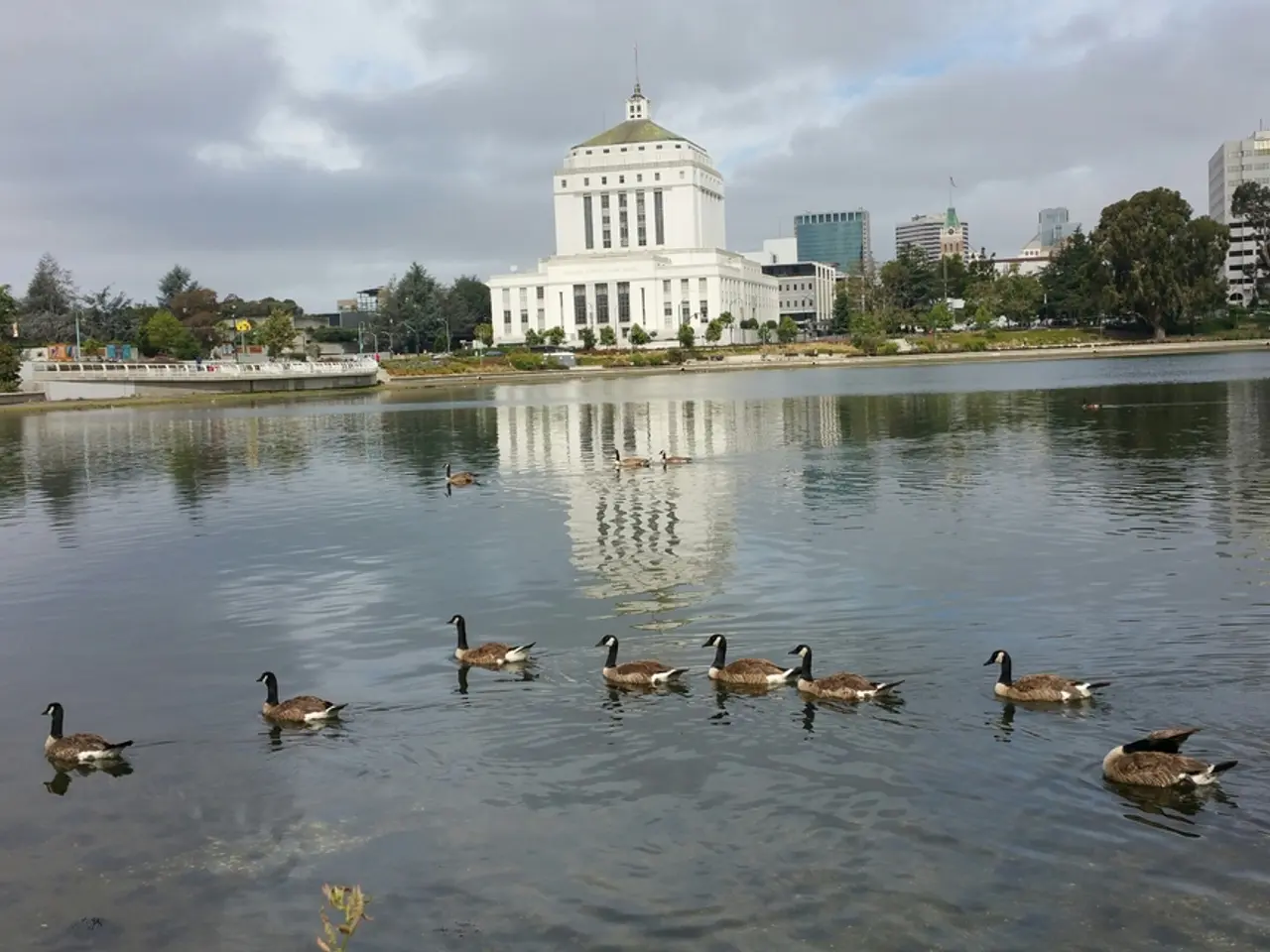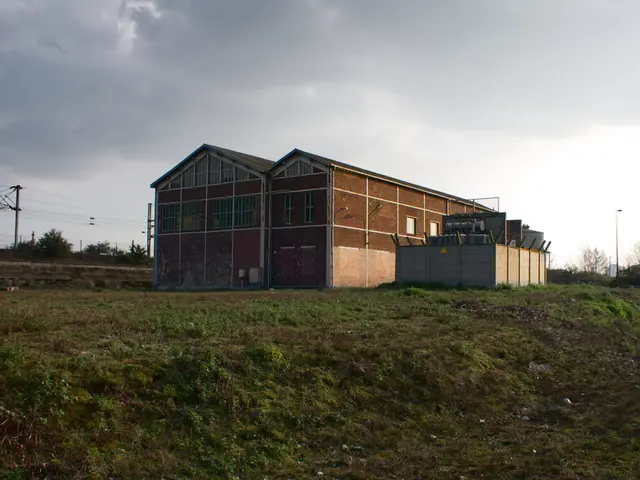Environmental and biodiversity calamity strikes Mayotte post-cyclone
Cyclone Chido, which made landfall in Mayotte on December 14, 2024, brought extensive damage to the island's natural environment. The cyclone's powerful winds, torrential rainfall, and large waves resulted in many trees falling, affecting precious tree species and causing severe damage to the natural environment [1][3].
The environmental devastation compounded existing vulnerabilities, as the cyclone also displaced about one-third of Mayotte's population and left many homes and infrastructure damaged, making reforestation efforts more challenging [1][3]. Access to water and health services deteriorated post-cyclone, with additional public health challenges like the spread of chikungunya, further stressing the ecosystem and communities dependent on it [3].
The loss of forest cover is causing wildlife suffering, with small dark lemurs called makis being spotted increasingly in urban areas. The destruction of forests also poses a high risk of illicit replanting due to crops being destroyed by Cyclone Chido [2]. Furthermore, bats, important pollinators for future reforestation, have lost their nesting spots in trees, and subsistence poaching of turtles is a looming risk as Mayotte's poorest struggle with food shortages while waiting for aid [2]. Grave concerns for lizards, insects, and flowering plants that used to proliferate on Mayotte have also been raised [1].
In response, French President Emmanuel Macron announced a major €3.2 to €4 billion reconstruction plan spanning 2025 to 2031 aimed at rebuilding Mayotte, boosting the local economy, and addressing infrastructure deficits. This plan supports rebuilding urban infrastructure, social benefits, and economic initiatives but also aims to control illegal housing and migration issues that complicate recovery [1][2][4].
Regarding biodiversity and reforestation specifically, the Fondation de France's Solidarité Mayotte Committee has been actively assessing the environmental damage and coordinating support for sustainable aid, though details on direct reforestation projects remain limited in the latest reports [3]. The massive tree loss and damaged ecosystems highlight a critical need for long-term ecological recovery efforts alongside social and economic rebuilding.
In the coming years, the regional director of the National Forestry Office, Benoit Loussier, predicts that in 10 years, plantations may restore a forest cover of eight meters high [2]. However, the success of these reforestation efforts depends on the population resisting converting destroyed forest zones into farmland, as illicit activity of converting forest zones into farmland was already prevalent before the cyclone, particularly by desperately poor illegal immigrants practicing subsistence farming [2].
Without trees, any torrential downpour will wash soil into the lagoon below, potentially killing off part of the lagoon's coral reef. Part of the mangrove is now completely bare and black [1]. The restoration of the forest cover can only happen if the population resists converting destroyed forest zones into farmland, and coordinated efforts are made to support sustainable reforestation projects.
In summary, Cyclone Chido severely damaged Mayotte's biodiversity by destroying many trees and natural areas, presenting major challenges to reforestation and ecosystem recovery. Reconstruction plans under French government leadership are underway to address both human and environmental vulnerabilities in a coordinated fashion [1][3]. However, precise details on the scale and timelines of reforestation efforts post-Chido have yet to be fully detailed in public sources.
- The environmental impact of Cyclone Chido extends beyond just the destruction of trees, posing threats to various wildlife species on Mayotte.
- The loss of makis' natural habitat due to fallen trees might force them to inhabit urban areas more frequently.
- Bats, crucial for future reforestation, are losing their nesting spots as trees are destroyed.
- Subsistence poaching of turtles is becoming a potential issue in Mayotte, given the food shortages faced by its poorest residents.
- Concerns about the survival of lizards, insects, and flowering plants on Mayotte have arisen due to the environmental damage caused by the cyclone.
- French President Emmanuel Macron announced a large-scale reconstruction plan, focusing on rebuilding Mayotte, boosting the local economy, and addressing infrastructure deficits.
- The plan includes rebuilding urban infrastructure, providing social benefits, and initiating economic projects to stimulate growth.
- However, the plan also aims to control illegal housing and migration issues, which may complicate recovery efforts.
- The Fondation de France's Solidarité Mayotte Committee is actively assessing environmental damage and supporting sustainable aid for biodiversity and reforestation efforts.
- Though specific details on reforestation projects are limited, the need for long-term ecological recovery is crucial in addition to social and economic rebuilding.
- In response to the cyclone, regional director Benoit Loussier predicts that plantations may restore a forest cover of eight meters high within ten years.
- However, the success of reforestation depends on the population resisting the conversion of destroyed forest zones into farmland.
- Illicit activity of converting forest zones into farmland was prevalent before the cyclone, particularly by illegal immigrants practicing subsistence farming.
- Without trees, soil can wash into the lagoon below, potentially causing harm to the coral reef.
- Part of Mayotte's mangrove is now completely bare and black due to the cyclone's destruction.
- Restoration of the forest cover is essential to prevent further soil erosion and protect the lagoon's coral reef.
- Cyclone Chido's devastating effects on Mayotte's environment necessitate coordinated efforts to support sustainable reforestation projects.
- Any reconstruction plan should include measures to prevent illicit replanting and conversion of destroyed forest zones into farmland.
- The environmental damage from Cyclone Chido has significant implications for the ecosystem and communities dependent on it.
- Access to water and health services has deteriorated post-cyclone, exacerbating public health challenges like the spread of chikungunya.
- This cyclone has further stressed the ecosystem and communities, making reforestation efforts more challenging.
- Cyclone Chido displaced about one-third of Mayotte's population and left many homes and infrastructure damaged, exacerbating the vulnerabilities of the island.
- The massive tree loss highlights the need for concerted long-term ecological recovery efforts alongside social and economic rebuilding.
- Global attention should be drawn to Mayotte's environmental challenges and the urgent need for coordinated efforts to address them.
- The cultural and economic importance of Mayotte's natural environment should be recognized to ensure its preservation and recovery.
- Increased funding and support from donors and international organizations are necessary to aid in the reconstruction, reforestation, and long-term recovery of Mayotte's environment.
- Collaborative efforts between governments, NGOs, and local communities are essential to ensure the success and sustainability of reforestation initiatives.
- As leaders in Environmental Science, Education, and even Finance, it is our collective responsibility to invest in and support sustainable solutions for Mayotte's long-term recovery and prosperity.








